On the afternoon of August 29, 1914, a different kind of procession moved down New York’s Fifth Avenue. Just weeks after the outbreak of a massive war in Europe, the street known for its opulent mansions and fashionable shoppers became a stage for a solemn protest. Approximately 1,500 women, united in their opposition to the conflict, marched in a demonstration that was striking for its silence.
The Women’s Peace Parade was organized by prominent suffragists and social reformers, including Carrie Chapman Catt and Harriet Stanton Blatch, the daughter of Elizabeth Cady Stanton. They planned the event not as a loud rally, but as a somber procession of mourning for the lives already lost in the war. The marchers were a cross-section of New York society, from wealthy women to nurses from the Henry Street Settlement, led by their founder, Lillian Wald.
As the parade began its route from 58th Street down to Union Square, a heavy quiet fell over the typically bustling avenue. The only sound accompanying the women was the steady, muffled beat of drums. This funereal rhythm set a deliberate and grave tone for the entire event. The sky overhead was gray, matching the mood of the marchers below.
Read more
The visual message of the parade was clear and powerful. Most participants wore black to symbolize death and mourning. Others chose to wear white, a symbol of peace, accented with black armbands or sashes. The organizers had declared that only one banner would be carried: a white flag showing a dove. This stark imagery stood in sharp contrast to the patriotic parades that would later become common.
Leading the procession was the parade marshal, Portia Willis. Behind her, a large banner carried a message that read, “We Are Mothers of Men.” This simple declaration aimed to highlight the personal stake women had in preventing war. The marchers carried no national flags, a deliberate choice to show that their protest was against war itself, not against any particular country.
Throngs of New Yorkers lined the sidewalks to watch the silent procession. While some newspapers had printed letters questioning what a parade of women could accomplish, the reaction from the spectators on the street was one of respectful silence. There was occasional, scattered applause, but for the most part, the crowd watched with a quiet understanding of the demonstration’s serious purpose. The march concluded without speeches, letting the silent, visual protest speak for itself.


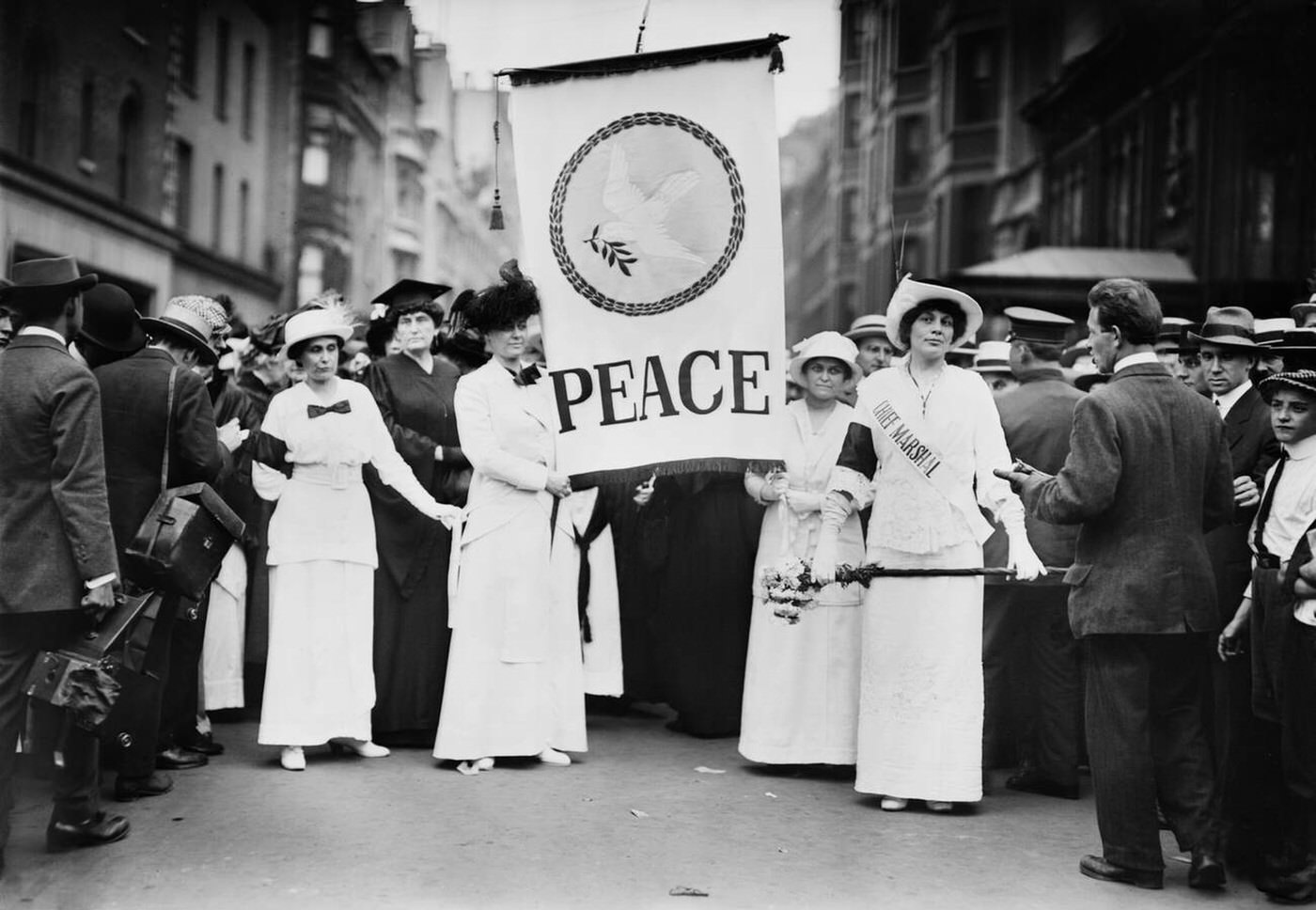
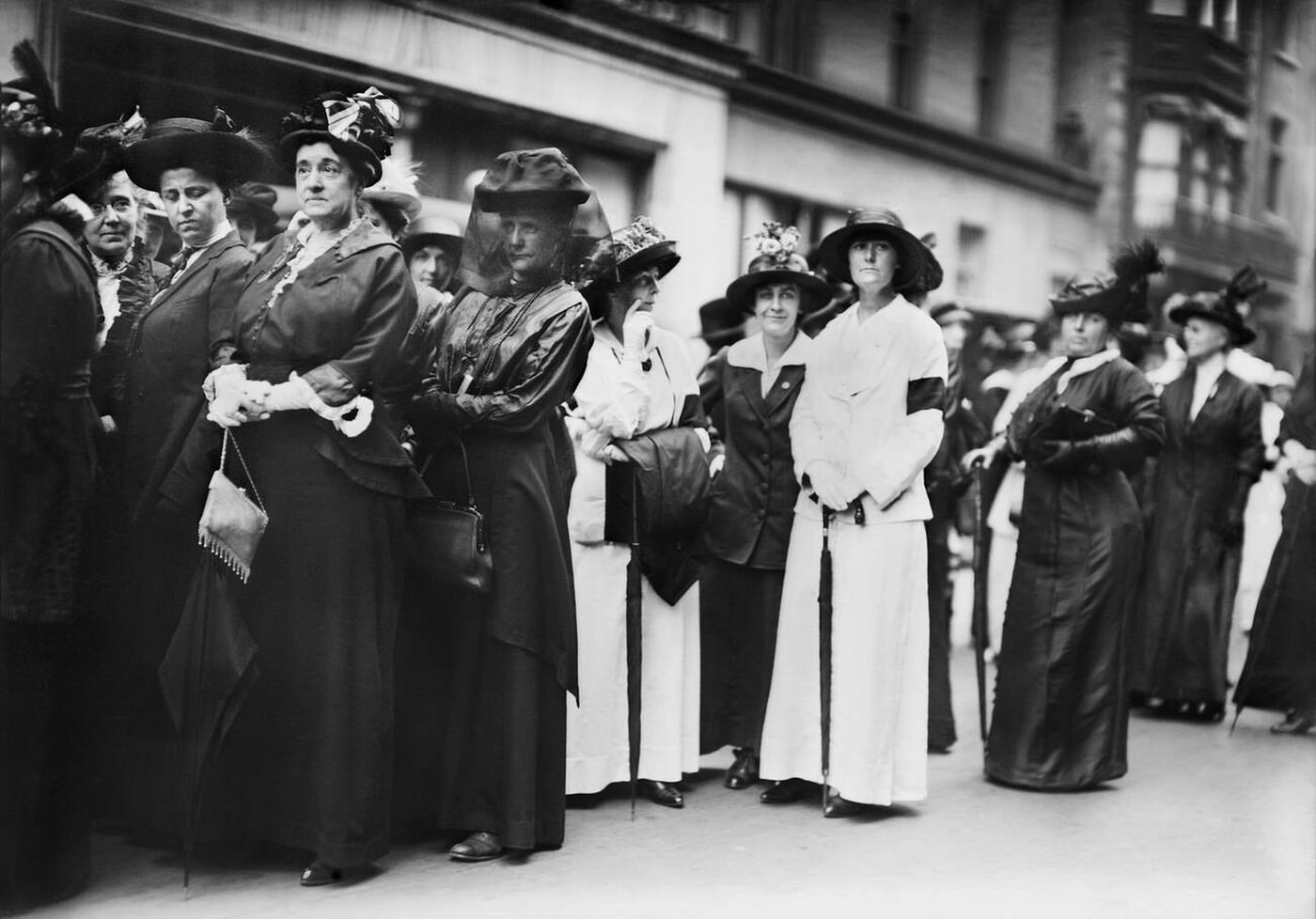
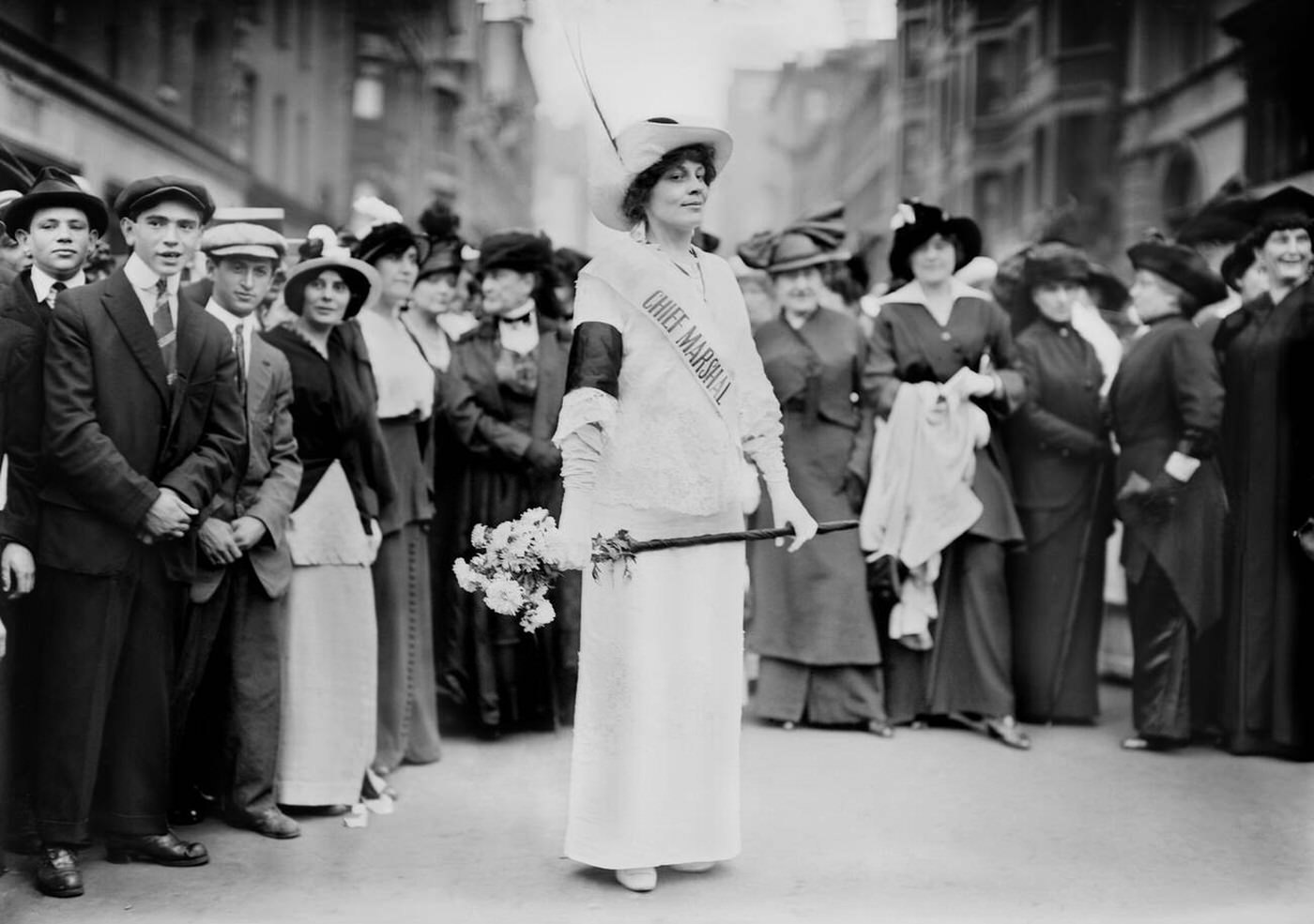
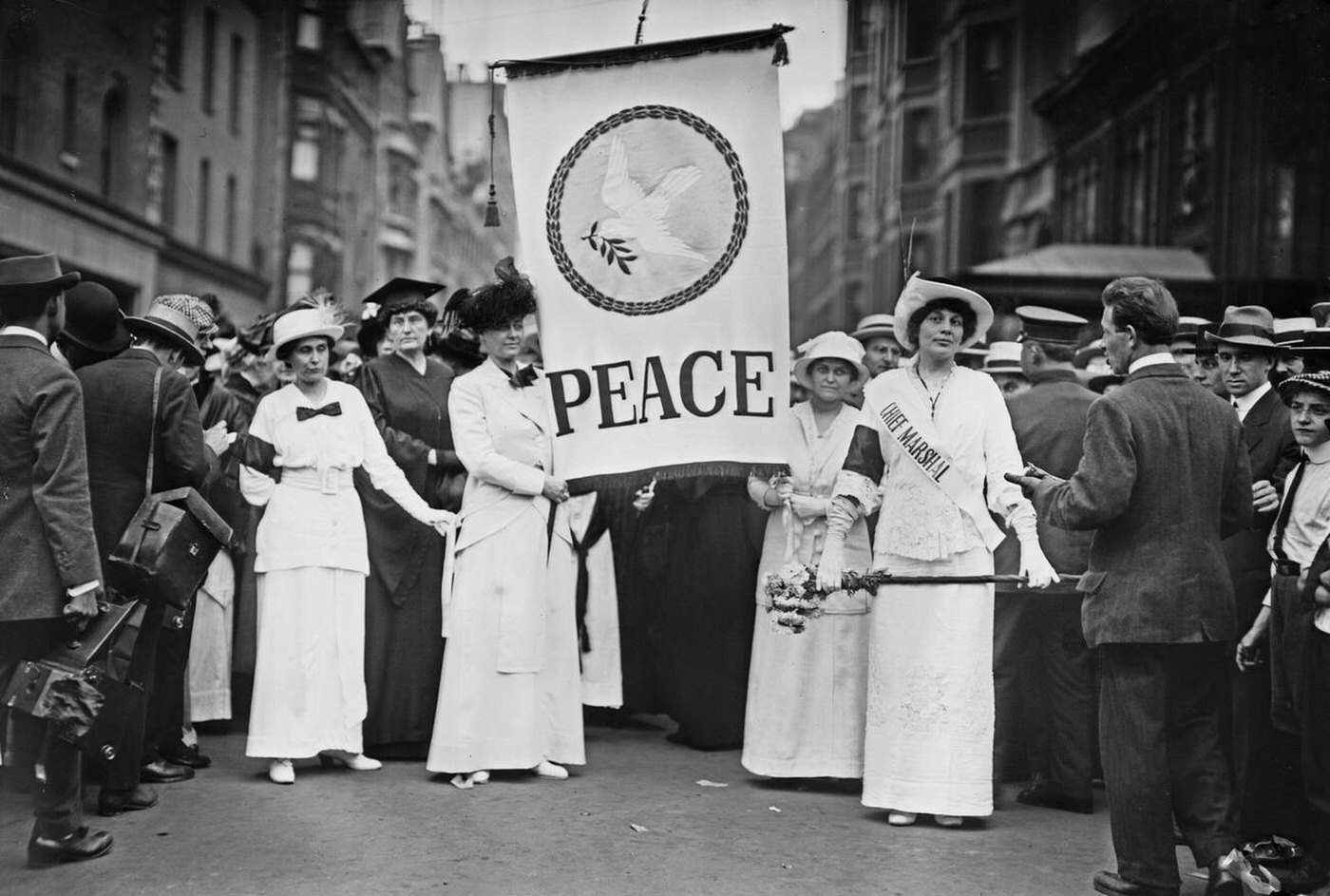
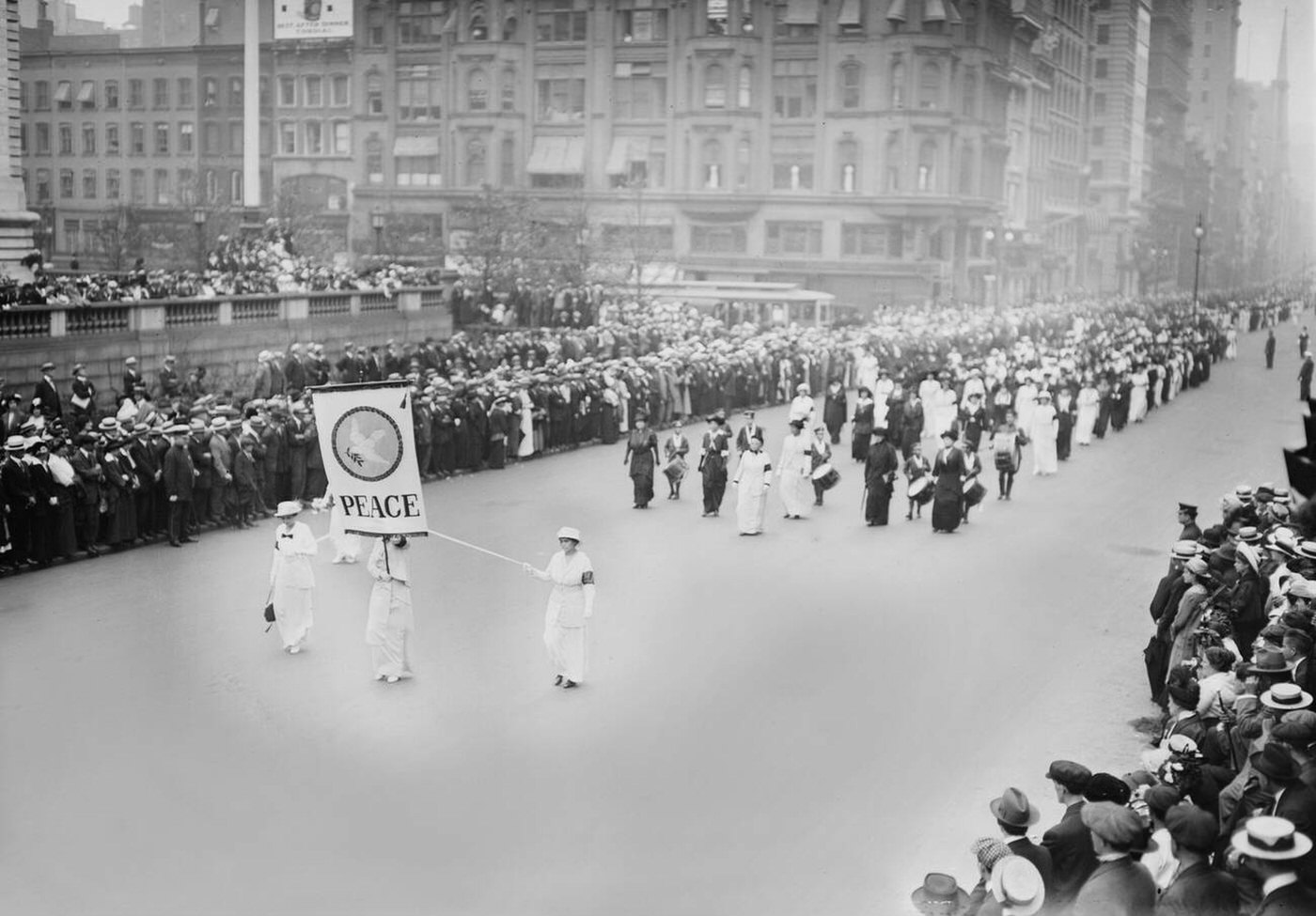
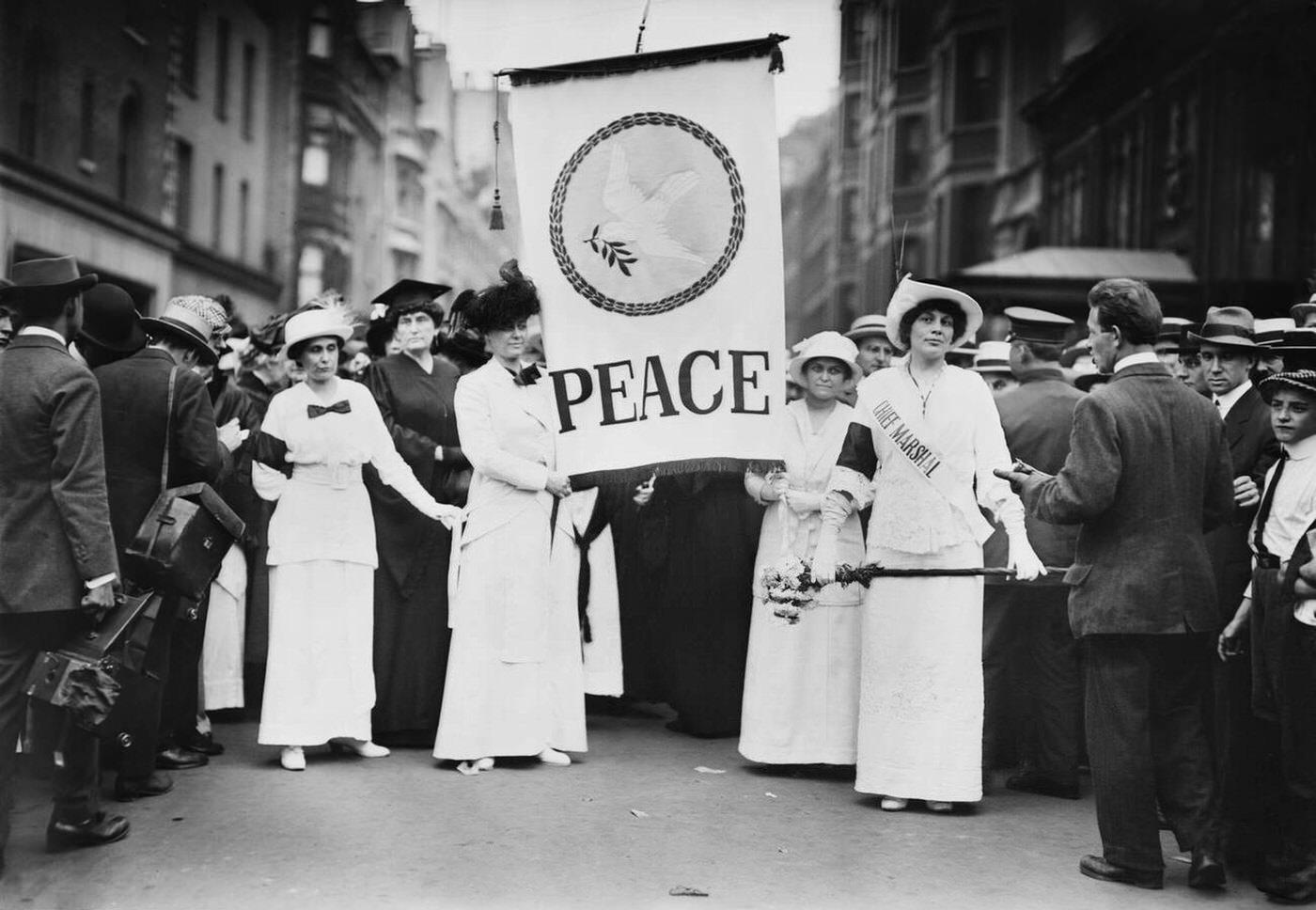
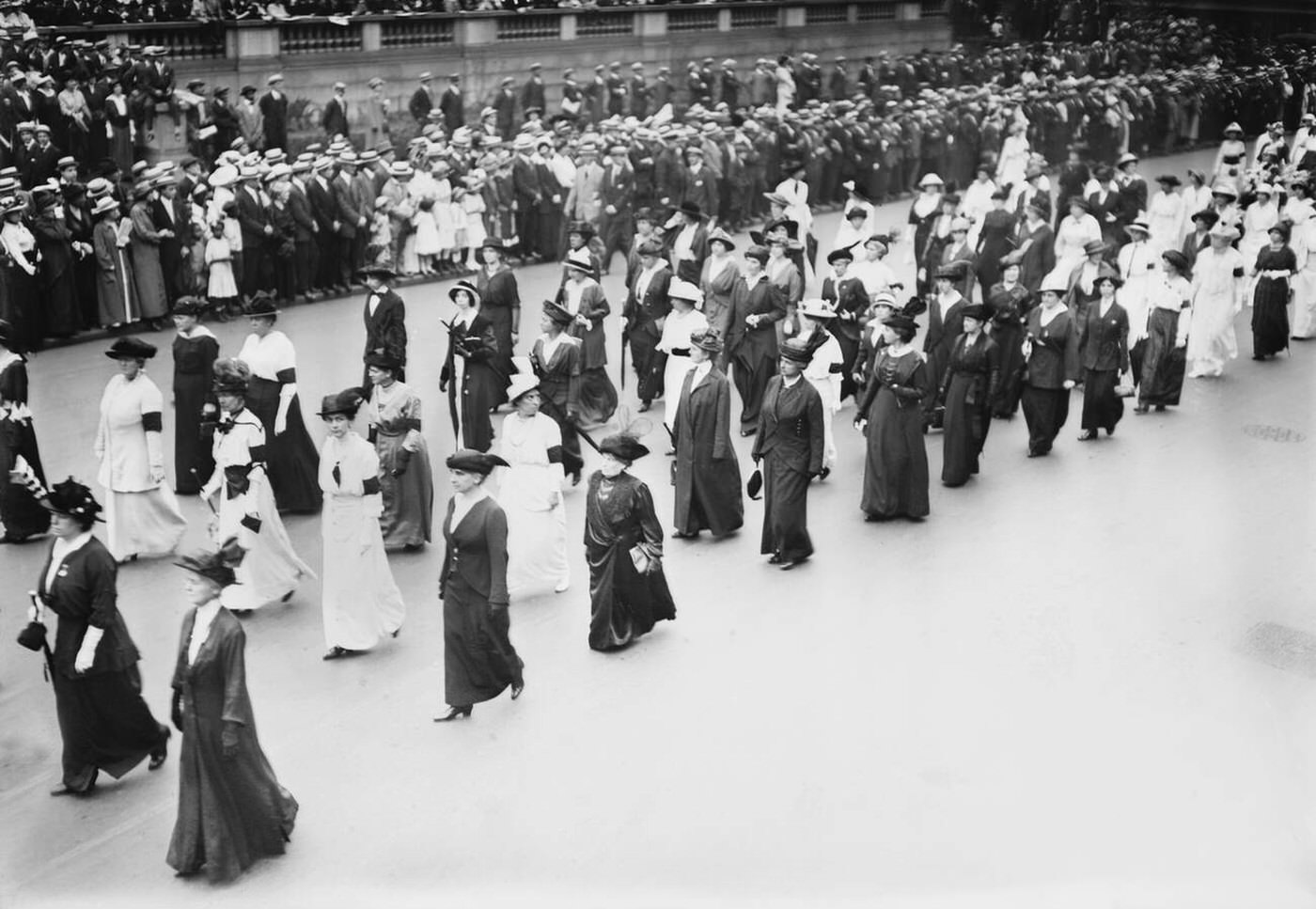
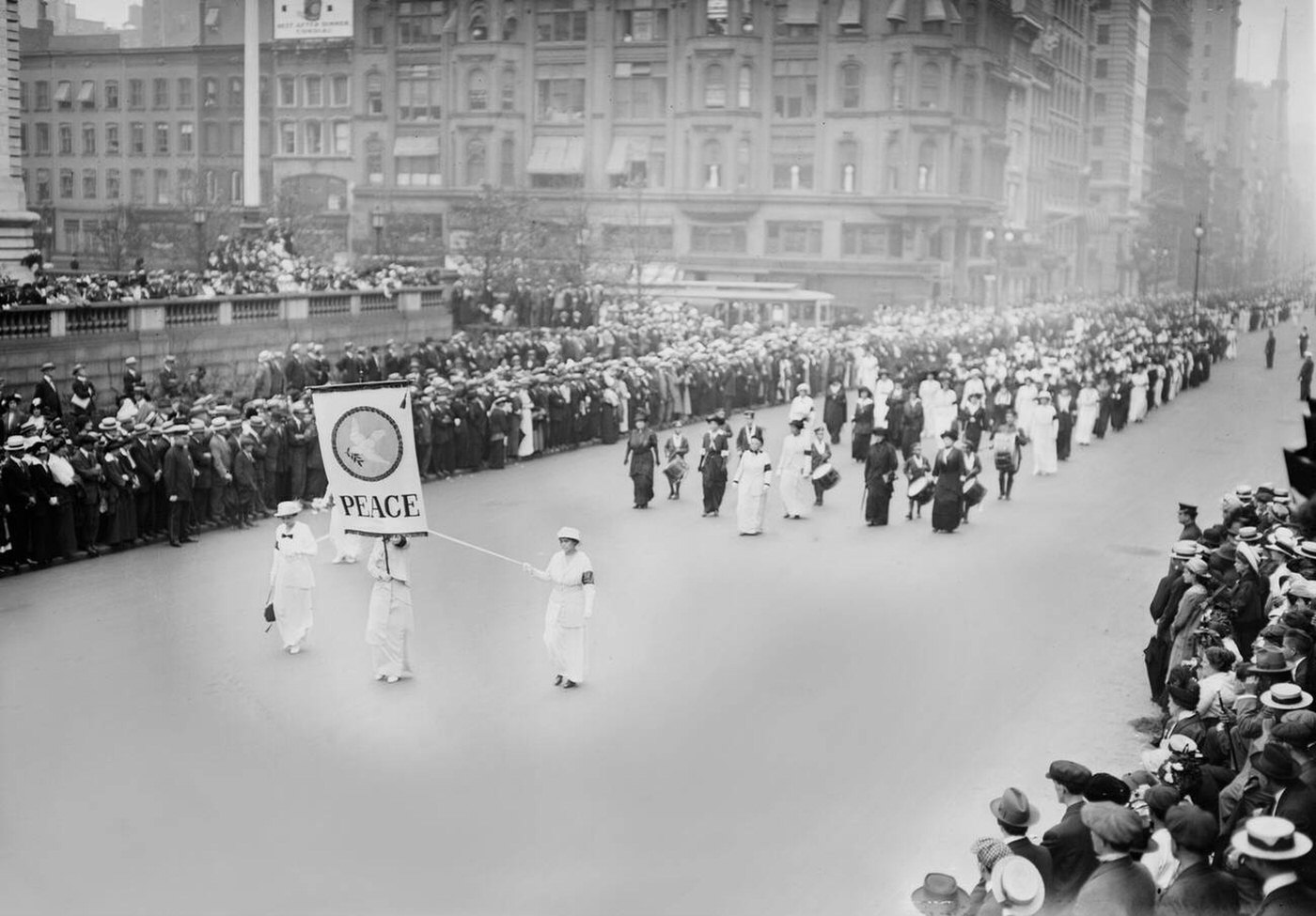

GIPHY App Key not set. Please check settings